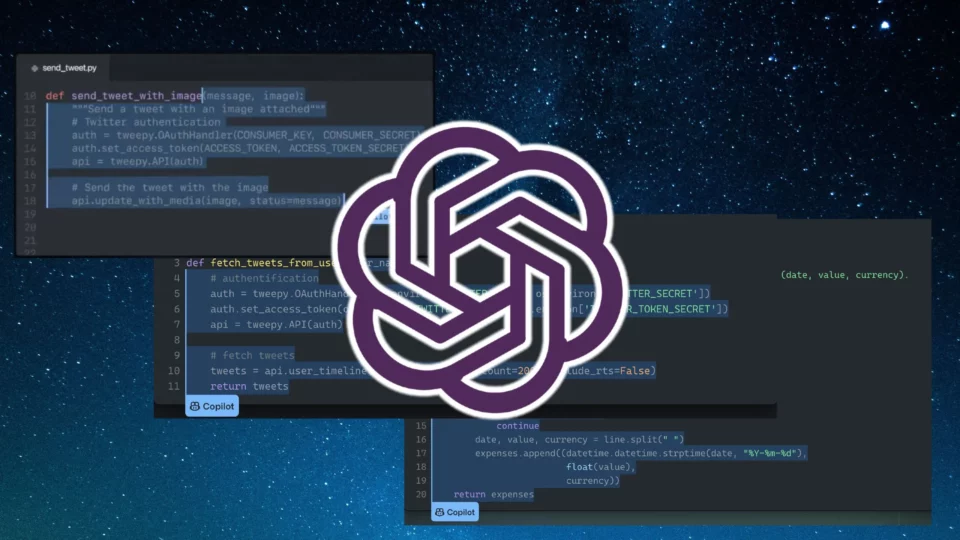Considering the dynamic nature of global tech industries, the relevance of advanced tools like OpenAI Codex is quite significant. It offers the potential to automate content creation and streamline decision-making processes, which can serve as an asset for tech hubs across various continents.
While its efficiency in driving innovation and productivity is recognized, its suitability must be examined across different vectors like adaptability, versatility, and scalability to meet the unique demands of such a diverse sector.
How does OpenAI Codex streamline the content creation process?

OpenAI Codex provides a platform that can greatly streamline content creation. Generating code and content based on simple descriptions given in natural language, cuts down the time and resources typically allocated to these tasks.
In industries where rapid development is crucial, being able to create prototypes and draft ideas quickly can give companies a significant edge. Furthermore, the AI’s ability to learn from past inputs means that it becomes more efficient over time, adapting to specific industry jargon and preferences.
Moreover, Codex can integrate with existing development workflows, complementing tools that tech industries already use. This allows for a smoother adoption process and can provide immediate improvements without substantial changes to current practices.
A focus on automation, not only saves time but also reduces the potential for human error, leading to a higher quality of content creation, whether that be code, marketing materials, or data analysis reports.
Can OpenAI Codex enhance creative solutions in tech development?

OpenAI Codex is not just a tool for automation; it’s also a resource for enhancing creativity. Providing suggestions and completing code can inspire developers to explore solutions they might not have considered.
Teams can experiment with more creative approaches without the pressure of deadlines, as Codex handles much of the routine coding tasks. This capability can foster an environment where creativity and efficiency coexist and thrive, particularly in R&D departments and amongst product developers.
In addition, for startup companies at different funding stages, Codex’s AI-driven capabilities can play a pivotal role. It allows small teams to punch above their weight, leveraging AI to brainstorm and iterate more freely.
This level of support in creative problem-solving can be the difference between a good product and a great one. It’s about expanding the sandbox in which developers play, introducing novel components they may weave into their technological fabric.
Does OpenAI Codex support different programming languages and frameworks?
A critical aspect for global technology industries is the support of numerous programming languages and frameworks, owing to the diversity of tech stacks across companies.
OpenAI Codex’s backing of a wide array of languages enables it to be compatible with many technology sectors. Whether it’s front-end JavaScript frameworks like React or backend systems in Python, Codex can adapt and provide pertinent code, making it an armory tool for developers worldwide.
Furthermore, its ability to understand and interlink various frameworks and libraries suggests that it can serve as a bridge between different areas of technology within the same project. This cross-functionality is vital for tech industries that often merge multiple technologies to create cutting-edge products.
The adaptability of Codex ensures that teams can remain agile and interoperable, key traits for a fast-paced, globally competitive market.
How does OpenAI Codex ensure quality and accuracy in generated outputs?

Quality and accuracy in auto-generated outputs are paramount concerns for tech industries. OpenAI Codex implements rigorous training using vast codebases to produce reliable and refined code snippets.
AI’s iterative learning process is crucial here, as it continuously improves its output by learning from user interaction and feedback. As it stands, OpenAI Codex is a glimpse into the future of AI-assisted development where reliability grows with each use.
Besides, the option to refine and customize the output adds a layer of quality control. Developers can review and tweak the generated code, which not only ensures adherence to industry standards but also allows for the infusion of company-specific best practices and guidelines.
This collaborative interplay between AI and human oversight is what can maintain high standards of quality and accuracy in a tool like OpenAI Codex, making it particularly fitting for professional tech environments.
Interested in learning how the OpenAI Codex operates and integrates with your company’s ecosystem? Explore our pillar article, “Getting To Know OpenAI Codex: AI-Driven Content Creation Simplified“, to gain a deeper understanding of how this innovative tool can be utilized in your content creation workflows.
Conclusion
In conclusion, OpenAI Codex presents a compelling case for adoption in global tech industries. It streamlines content creation processes, fosters creativity in tech development, supports a diverse range of programming languages, and ensures the quality and accuracy of its outputs.
While the initial investment in integrating AI tools such as Codex may appear daunting, the potential returns in enhanced productivity and innovation could be substantial.
It is a noteworthy asset for any tech organization looking to maintain a competitive edge in an ever-evolving industry landscape. 🚀
- The Agentic Startup Manifesto - June 8, 2025
- Remote Hiring in 2025 - April 5, 2025
- Burnout in Remote Teams: How It’s Draining Your Profits - January 27, 2025
